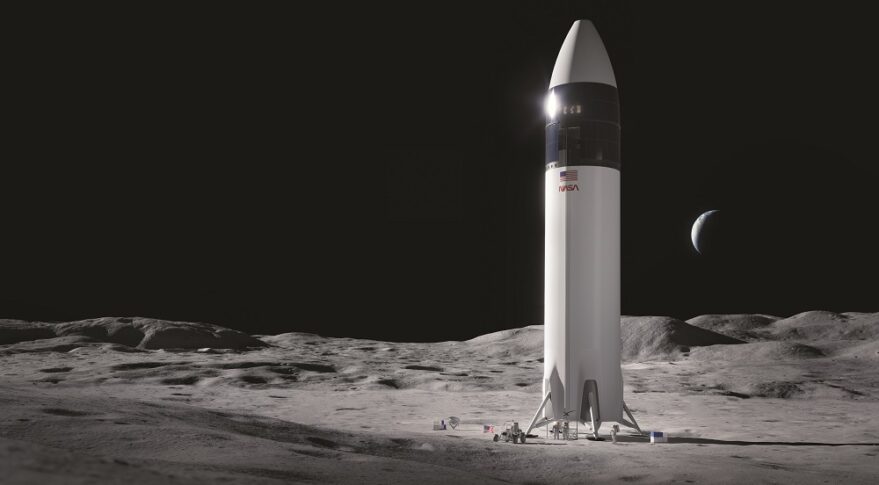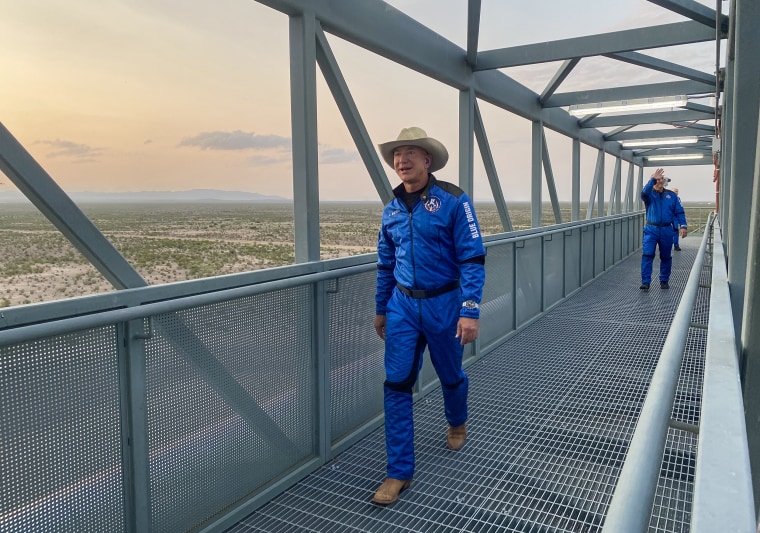GAO report details rejection of HLS protests

WASHINGTON — The Government Accountability Office offered more details about its decision to reject protests filed by two companies of NASA’s Human Landing System (HLS) award to SpaceX.
The GAO released Aug. 10 a 76-page decision denying protests filed in April by Blue Origin and Dynetics of NASA’s decision to make a single HLS award, valued at $2.9 billion, to SpaceX. The GAO announced its decision July 30 but withheld the formal decision memo until a version suitable for public release, with redactions, was available.
The GAO rejected claims by the protesting companies that NASA erred by making a single award when it discussed its desire to make multiple awards. The “plain terms” of the solicitation, the GAO concluded, “unequivocally put the protesters on notice that NASA could make multiple awards, a single award, or no award at all.”
The GAO decision provides new details about the financial constraints NASA faced when assessing the HLS proposals. NASA received $850 million from Congress in fiscal year 2021 for the HLS program and identified an additional $96 million from other programs that could go to HLS. However, $389 million of that funding was already committed to the “base period” awards NASA made to Blue Origin, Dynetics and SpaceX in 2020, and $202 million reserved for internal and other costs for the program. That left $355 million available for the new HLS awards.
All three companies requested initial milestone payments more than that amount, although the exact numbers are redacted in the public GAO document. NASA requested SpaceX, the lowest bidder, revise its payment structure to address that. The document does not disclose the new value of that initial milestone payment, although government contracting records show NASA paid SpaceX $300 million on July 30, the day the GAO rejected the protests.
Blue Origin and Dynetics, the GAO concluded, “did not submit proposals priced in a manner that NASA could make multiple awards with the available funding for the HLS program.” While the questions about the importance of multiple competitors, the GAO added in its decision, “may merit further public debate, they do not establish that NASA has violated any applicable procurement law or regulation.”
The GAO also rejected claims by Blue Origin and Dynetics that their proposals were unfairly evaluated in comparison with SpaceX’s proposal. These range from Blue Origin’s criticism of how its lander’s communications system was assessed to the mass of Dynetics’s lander that “far exceeds” its allocation.
The GAO dismissed those claims, concluding that “the record adequately supports NASA’s evaluation of the protesters’ proposals and was consistent with applicable procurement law, regulation, and the terms” of the solicitation.
However, the GAO did agree with one claim that the protestors made about how NASA evaluated SpaceX’s proposal. SpaceX’s concept of operations for its Starship lunar lander requires 16 launches: one of the lander itself, 14 “tanker” Starships to fuel it and another whose purpose is redacted. The protestors argued that NASA erred in not requiring a flight readiness review (FRR) for each launch.
The GAO agreed that, under the terms of the solicitation, an FRR is needed before each launch, rather than one for the entire series of launches. NASA requested SpaceX amend its proposal to include two additional FRRs, but the GAO said that still fell short of the requirements in the solicitation.
However, the GAO also concluded that this oversight did not have a material impact on the competition, stating in the document that “the record reflects that NASA’s evaluation was largely reasonable, and the relative competitive standing of the offerors under the non-price factors would not materially change.”
Dynetics did not comment on the GAO report, and in a July 30 statement said that “while disappointed, we respect the GAO’s determination.” Blue Origin, though, offered no concessions even after the release of the report.
“The GAO report confirms NASA’s desire for multiple awards and confirms that there were significant issues with how NASA conducted this procurement process,” the company said in an Aug. 11 statement. “We stand by our assessment that SpaceX received preferential treatment by conducting exclusive negotiations with them.”
The company said it urged NASA to select a second provider, something agency officials said they support but lack the funding to do so currently. “Two providers ensure greater safety and mission success, promote competition, and control costs.”
SpaceX did not comment on the report beyond tweets from company founder and chief executive Elon Musk addressing one aspect of the report regarding the need for 16 launches to support a single Starship lunar lander mission. “16 flights is extremely unlikely,” he said, estimating a “max of 8” flights to fill the tanks given the projected payload capacity of Starship, and possibly as few as four.
Jeff Bezos And Richard Branson Overlooked Spaceflight Safety Concern, Experts Say

As Jeff Bezos and Richard Branson raced to hurtle themselves to the edge of space, both billionaires decided to do so in fetching blue jumpsuits.
Bezos accompanied his personalised jumpsuit with an oversized cowboy hat, while Branson kept things simple with a pair of sunglasses and an ear-to-ear grin.
However, according to some experts, the billionaires’ sartorial choices on their respective spaceflights overlooked a safety feature that is usually a requirement on any NASA spaceflight

While Branson and Bezos both decided to opt for blue jumpsuits, experts in space travel safety noticed the conspicuous lack of pressure suits, which are used to protect astronauts from rapid decompression when outside of Earth’s atmosphere, Bloomberg reports.
NASA and other space agencies around the world made such suits a requirement after experiencing fatal accidents without them, though NASA’s standards don’t apply to those owned by billionaires like Branson and Bezos. Companies and their crews that offer space tourism flights, like Branson’s Virgin Galactic and Bezos’s Blue Origin, have been made exempt from federal safety oversight by Congress.
Tommaso Sgobba, former European Space Agency official and executive director of the International Association for the Advancement of Space Safety, said: ‘The reality is when you go to space, you don’t dress with nice stuff, you dress with the right stuff.’
Related video:
Sgobba believes restrictions on government oversight on private enterprises like these need to end. Though the Federal Aviation Administration (FAA) thoroughly reviews any launch application, it primarily looks at the reliability of the spacecraft, and Congress has not allowed the agency to set any rules to protect the occupants.
‘It is time, I believe, to update our human spaceflight regulatory framework,’ George Nield, who directed the FAA’s office overseeing commercial launches from 2008 to 2018, said.
Bezos’ Blue Origin takes NASA to
court over SpaceX lunar lander contract
The protest, filed in the U.S. Court of Federal Claims on Monday, is sealed and marks the next step in the company’s attempt to get NASA’s decision overturned.

Jeff Bezos walks across the crew access gantry to enter into
the crew capsule for flight on July 20, 2021.Blue Origin
Aug. 16, 2021, 11:21 AM MDT / Updated Aug. 16, 2021, 11:26 AM MDT / Source: CNBC.com
By Michael Sheetz, CNBC
Jeff Bezos’ space company Blue Origin filed a complaint in federal court against NASA, continuing its protest that the agency wrongly awarded a lucrative contract to Elon Musk’s SpaceX earlier this year.
“This bid protest challenges NASA’s unlawful and improper evaluation of proposals,” Blue Origin’s lawyers wrote in its court filing.
The protest, filed in the U.S. Court of Federal Claims on Monday, is sealed and marks the next step in the company’s attempt to get NASA’s decision overturned. A Blue Origin spokesperson confirmed the lawsuit filing, adding in a statement to CNBC that it is looking “to remedy the flaws in the acquisition process found in NASA’s Human Landing System.”
“We firmly believe that the issues identified in this procurement and its outcomes must be addressed to restore fairness, create competition, and ensure a safe return to the Moon for America,” Blue Origin said.
Blue Origin’s filing in court comes a couple of weeks after the U.S. Government Accountability Office denied the company’s protest, upholding NASA’s decision.
The GAO ruling backed the space agency’s surprise announcement in April that NASA awarded SpaceX with a lunar lander contract worth about $2.9 billion. SpaceX was competing with Blue Origin and Dynetics for what was expected to be two contracts, before NASA only awarded a single contract due to a lower-than-expected allocation for the program from Congress.
Blue Origin has not let up on its fight to win a contract under NASA’s HLS program, one of the final key pieces of the agency’s plan to return U.S. astronauts to the surface of the moon. Before the April contract award, NASA had handed out nearly $1 billion in concept development contracts — with SpaceX receiving $135 million, Dynetics $253 million, and Blue Origin receiving $579 million.
The company’s court filing on Monday comes as Blue Origin has stepped up a public relations offensive against NASA using SpaceX’s next-generation Starship to land astronauts on the moon. In a series of comparative infographics, Blue Origin has emphasized the “unprecedented number of technologies, developments, and operations that have never been done before for Starship to land on the Moon.”
Blue Origin last week released an infographic that added that Starship is “a launch vehicle that has never flown to orbit and is still being designed.”
Musk, in response to Blue Origin’s infographic, gave his view of Bezos’ company and its criticism.
“The sad thing is that even if Santa Claus suddenly made their hardware real for free, the first thing you’d want to do is cancel it,” Musk wrote in a tweet.
No comments:
Post a Comment